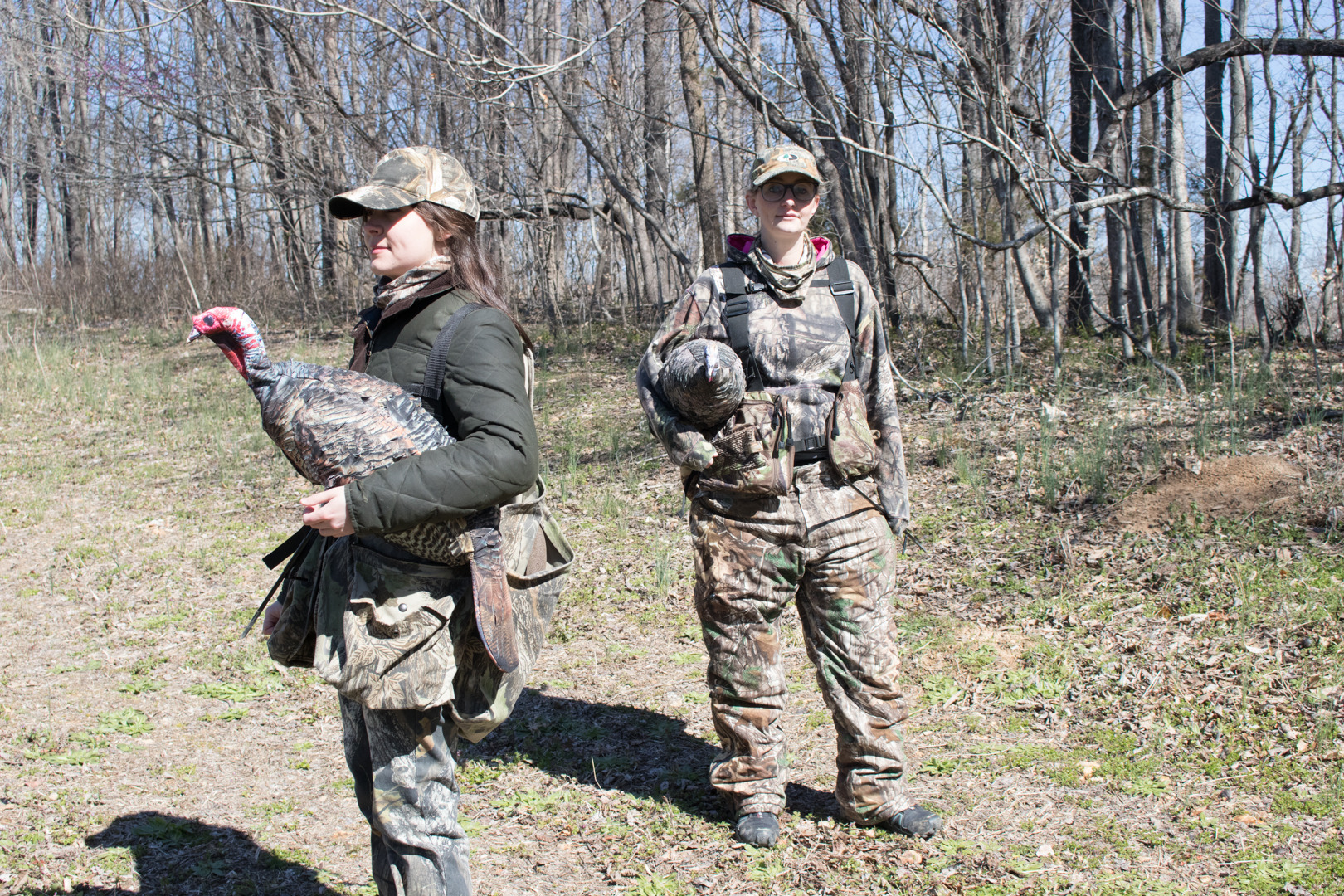Mar 28, 2018
3 EASY WAYS TO CARRY TURKEY DECOYS
The reason I love hunting turkeys so much more than deer is that it gives me the choice to sit still or get up and move. And I typically choose the latter, not being able to stand confinement and appreciating the opportunity to pack light.
A minimalist’s turkey vest doesn’t hold more than a decoy or two, a call or two, and a few extra shotgun shells. One of our favorite decoy combinations to carry is a MISS PURR-FECT hen and FANATIC XL. We use MISS P for the traditional back-against-a-tree setup. The FANATIC XL gets deployed when a stubborn tom hangs up in a field and reaping is the only option.
How we carry our decoys depends largely on the situation we’re facing. Whether we’re slowly ambling through the woods, skirting a creek bed, or crawling madly toward an open field, choosing the right method to carry your turkey decoys could give you the extra couple of seconds you need to settle in before ol' tom rounds the bend.
Not in a Hurry
Not getting in a hurry is the best way to go about anything. In turkey hunting, you’ll have all the time you need if you don’t have the bad habit of hitting the snooze button. Or if the morning’s first setup was not successful, you can take a stroll through the woods, periodically stopping to try raising a gobble.

In either of these scenarios, your decoys can be packed properly and stored in your vest. This means compressing the accordion-like MISS PURR-FECT and/or JAKE PURR-FECT and cinching down the strap. The FANATIC XL is a simple twist and fold, like our big-game decoys. If you’re right handed, it’s natural to carry your shotgun over your right shoulder. Consider putting your decoys into the left side of your vest so they are easily accessible and you won’t have to lay your gun in the wet grass or mud.
Moving Quickly
It’s mid morning. The birds you’d roosted the evening before flew down in the wrong direction. So you find yourself on a peaceful stroll, stopping periodically to hit a crow or owl call when suddenly a gobble rings out about 300 yards away in the direction you’re already walking. The only problem is the goat fence that’s directly in between you and the tom. And knowing a turkey can’t get through this type of fence, you’re only real chance is to cut the distance as quickly as possible.
Ideally, you’d like to cross the fence before setting up. If you think that’d bust the bird, try to get within 30 yards or a range you’re comfortable shooting. As you’re briskly moving from point A to point B, go ahead and get your decoy out. Take the strap off but keep it compressed with your hand to avoid snags. To save even more time, have the stake ready to go in your other hand. If you’re not able to cross the fence, consider setting the decoy behind you to draw the bird closer to your gun barrel.
On the Run
Rarely should you have to run while turkey hunting though it does happen. But just to be prepared for whatever, here’s a scenario: A gobbler is coming in on a string toward your decoy setup - the PURR-FECT PAIR - when a live hen comes out of nowhere and leads him off in the other direction. There’s a large field in front of you surrounded by woods, so your only opportunity to get in front of him again is to go around.

Without a lot of time, you can simply pull the decoys out of the ground and carry them by their necks, much like you would a brace of ducks or pheasants. Just put the stakes in your vest; they’re easy to lose.
We’d never suggest leaving decoys setup when you’re not present for a number of reasons, including having them shot by another hunter or returning to find a strutter in the vicinity. Only when you’ve reached a point where you think you can either call the bird back in or reap him, would we suggest setting the decoys down (or staking them).
